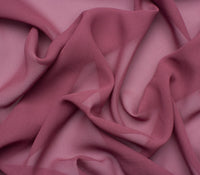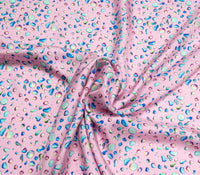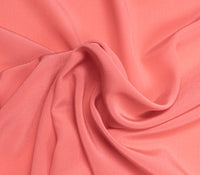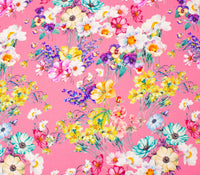Crêpe Fabric - A Complete Guide

The world is full of beautiful textiles that can create stunning looks. Crêpe fabric, or crepe, is one of the most popular, with great versatility and quality it gives dressmakers and designers the freedom to create in ways that wouldn’t be possible without it. If you’re looking for a luxurious, comfortable, beautifully draping fabric, you should consider using crêpe.
So, what is crêpe fabric, how is crêpe made, and what can you do with the material? Here’s a guide to this stunning textile.
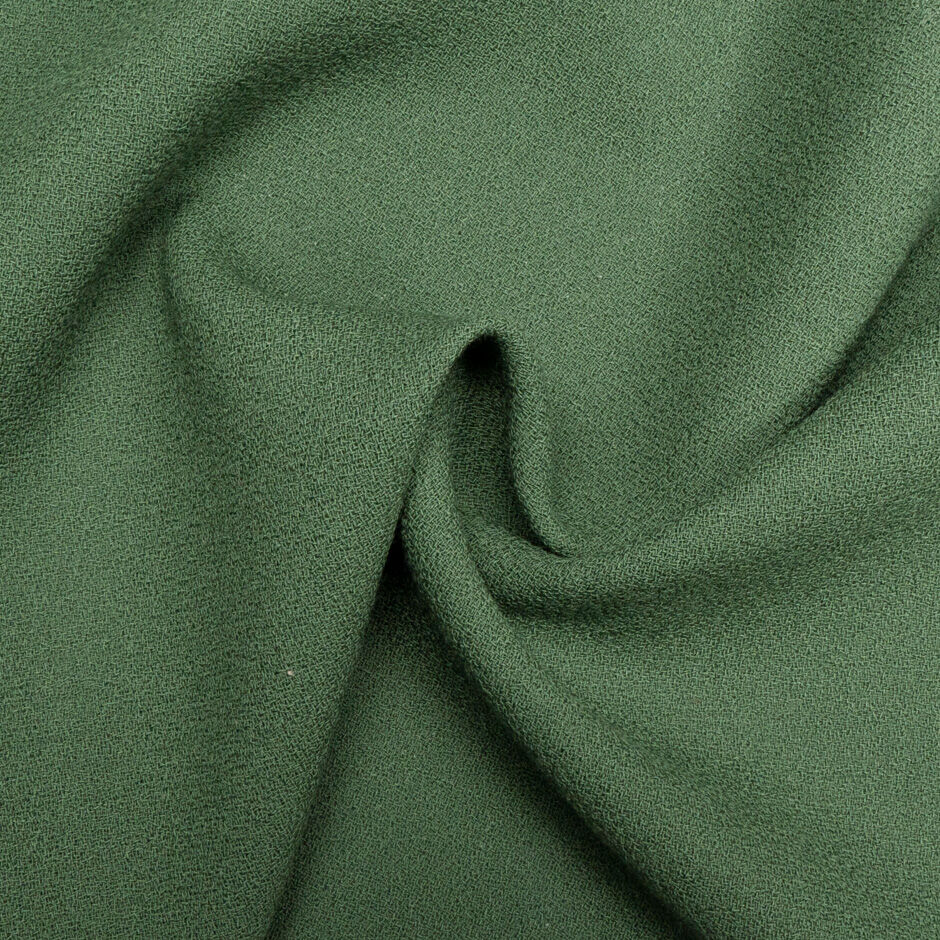
What is crêpe fabric?
You can come across the fabric in all types of clothing from delicate and beautiful bridal gowns to functional yet classy office wear.
Crêpe’s beautiful and unique look comes from its weaving method, which creates a rippling texture. The finished fabric has a wrinkled and bumpy appearance.
The extent of the look depends on the fibres used to craft the fabric. Crêpe can use natural fibres such as wool or silk, or synthetic fibres such a polyester or rayon. The yarn fibre can produce a more matte or a glossy finish, and not all cloths look as wrinkled as others.
How is crêpe material made?
One of the reasons crêpe fabrics are such a versatile and fun material to work with comes from its unique processing. While the many fibres used to create the base textile give a slightly different texture, a process called ‘hard twisting’ gives crêpe a unique feel and look.
The technique twists the fibres tighter than in many other types. Weavers create alternate S and Z twists during the twisting, providing the crêpe yarn with a bouncy feel. All crêpe yarns use alternating spinning methods, no matter what fibres are being used.
After finishing the yarn twisting, manufacturers can treat it in different ways. Crêpe yarn can be dyed into different colours, printed onto, and then crafted into clothing.
What are the qualities of crêpe fabric?
The different fibres used give the fabric unique qualities. The most characteristic attributes of crêpe are:
- ● Wrinkled look
- ● Breezy and breathable
- ● Lightweight feel (though the fabric can be heavy, depending on the material)
The material might not be known for being excellent at retaining heat, but it is excellent for wicking moisture. Designers often use crêpe for both winter and summer styles, although the fabric is not the warmest to provide pure heating for winter clothing, but it can be used to create luscious winter dresses as well as the more obvious lighter, stylish summer dresses.
Where is crêpe fabric produced?
Although crêpe has multiple production locations, the crêpe that Joel and Son Fabrics stocks is produced in Italy.
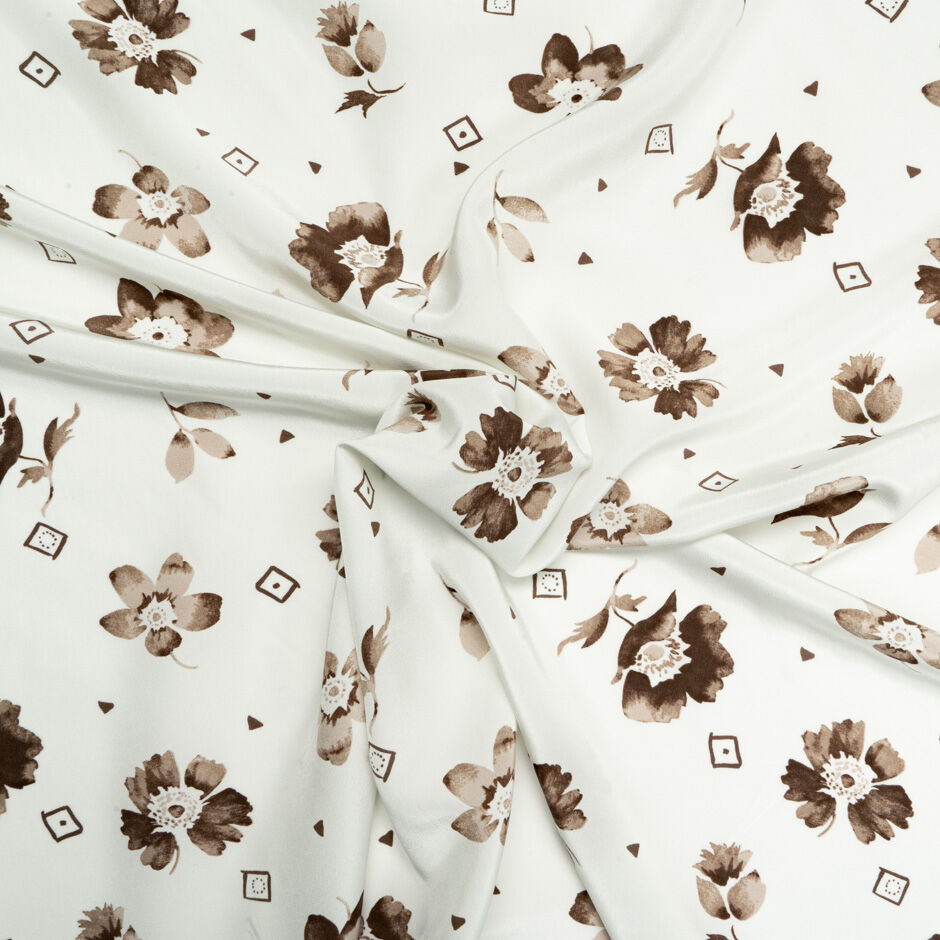
How many different types of crêpe textiles are there?
Understanding the various types of crêpe fabrics available can help you appreciate the material and its diverse applications better. There are many cloth styles, each utilising slightly different construction techniques and fibres. Various cultures around the world have their own unique crêpe styles, all demonstrating the cloth's versatility.
The most popular Joel & Son crêpe fabrics include:
● Crêpe de Chine - The lightweight material is made from silk. It differs from many other crêpe fabrics in that it doesn’t have a puckered surface but a smooth, matte finish. The fabric is created using tightly twisted crêpe yarns. Crêpe de Chine is affordable with a similar feel to the more expensive silk.
● Marocain Crêpe - The fabric has a lustred texture. It has a ribbed look, often created with a combination of silk, rayon, and wool or only one of these materials.
● Wool Crêpe - The fabric has a crinkled surface texture created by the tightly crimped yarns and slack warp yarns used in weaving. It has a very fluid drape, and is suitable for jackets, dresses and skirts.
● Silk Moss Crêpe - The fabric is made with silk yarns. The finished textile has a moss-like effect, with a crisp and crimped appearance.
● Silk Satin Crêpe - The fabric is also known as satin-backed crepe. The textile has one smooth and soft side and the other with a crinkled appearance, like a typical crêpe.
● Crêpe Georgette - The fabric has a soft and smooth appearance. It is primarily produced from silk or synthetic silk-like fibres, such as rayon. It isn’t very elastic and popularly used in dresses for its drape quality.
What is crêpe fabric used for?
When you consider the various ways crêpe is used, its versatility truly stands out. The material fits well for many garments designs.
The most common use is creating stunning evening and formal clothing, from suits to gowns. Crêpe is among the popular high-fashion fabrics and is often picked for luxury office wear. You can use it to create blouses and trousers, but it’s also popular among bridal gown designers.
Certain fibre combinations also make it a lovely casual fashion fabric. You can create skirts, shorts, and t-shirts … the possibilities are endless!
Aside from garments, crêpe fabric is ideal for accessories. It looks beautiful as a material for scarves, and shawls.

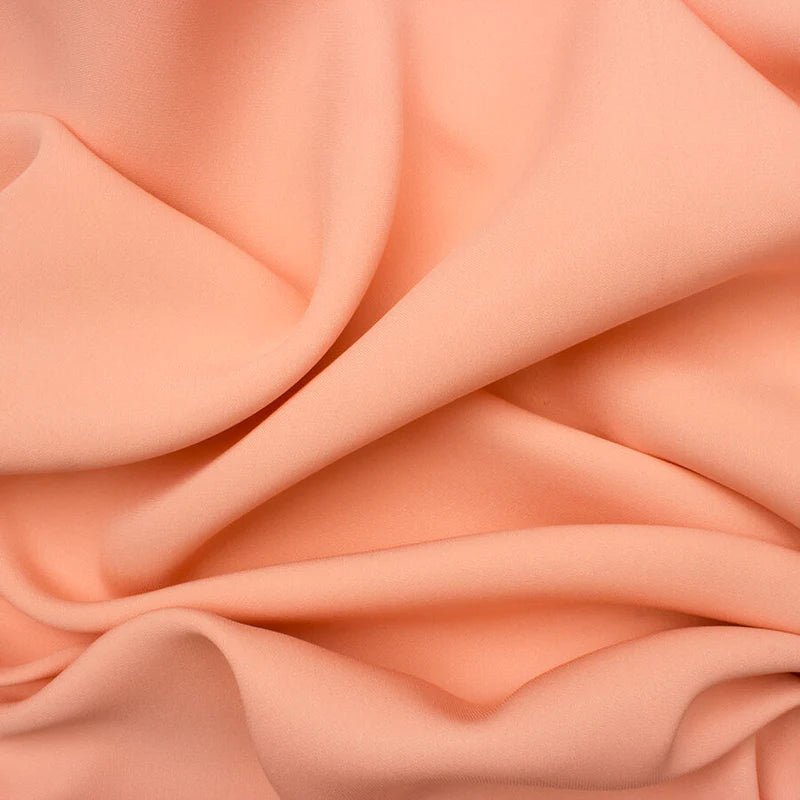
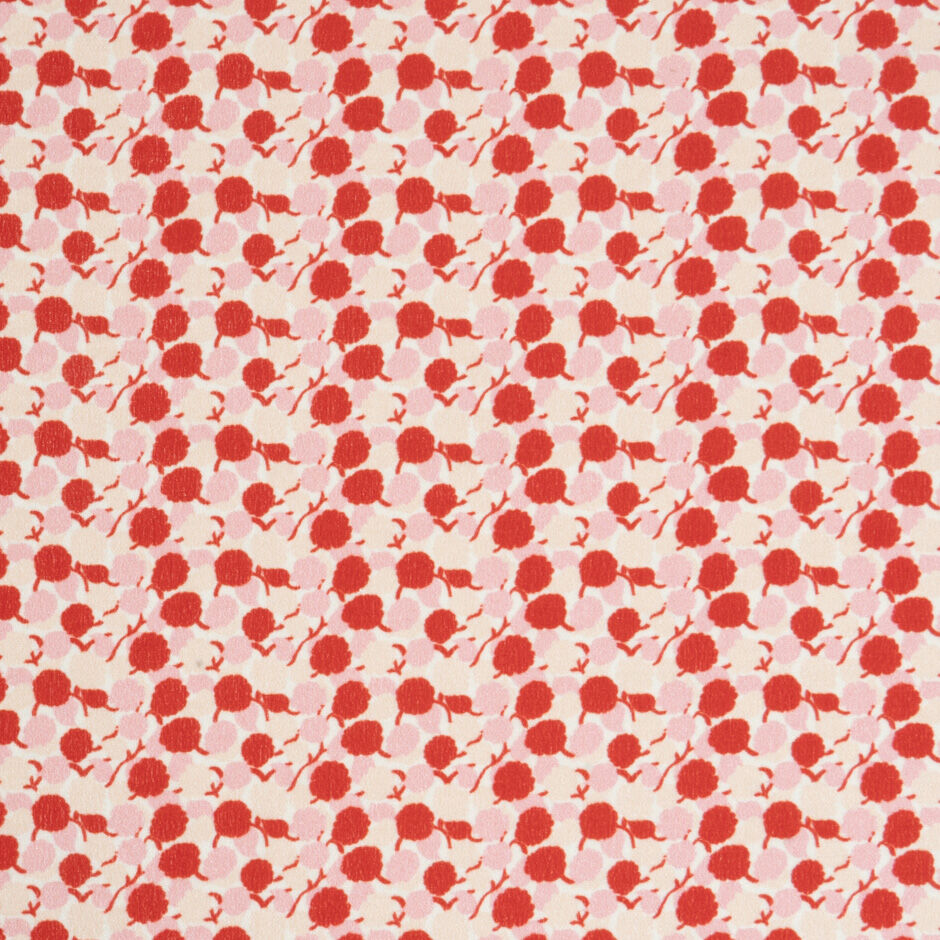
Things to consider when using crêpe fabrics
Crêpe is a relatively stable fabric, georgettes and poly crepes are easy to sew with. The difficulty might vary from type to type, for example, if the fabric is light, you might see some shape changes. Cutting such light fabric might result in unexpected growth or snagging.
To avoid this, you may want to use a piece of tissue paper under the bottom layer of the fabric. Put through a sewing pin near the selvage of the fabric. Make sure you’re using fine pins for delicate fabrics.
Make sure you’re using very sharp dressmaker scissors to cut the fabric without breaking threads or snagging it.
When sewing lightweight fabrics, we suggest using a walking foot, as it tends to grip onto the top layer of fabric and helps move it under the needle, resulting in more gentle quilting.
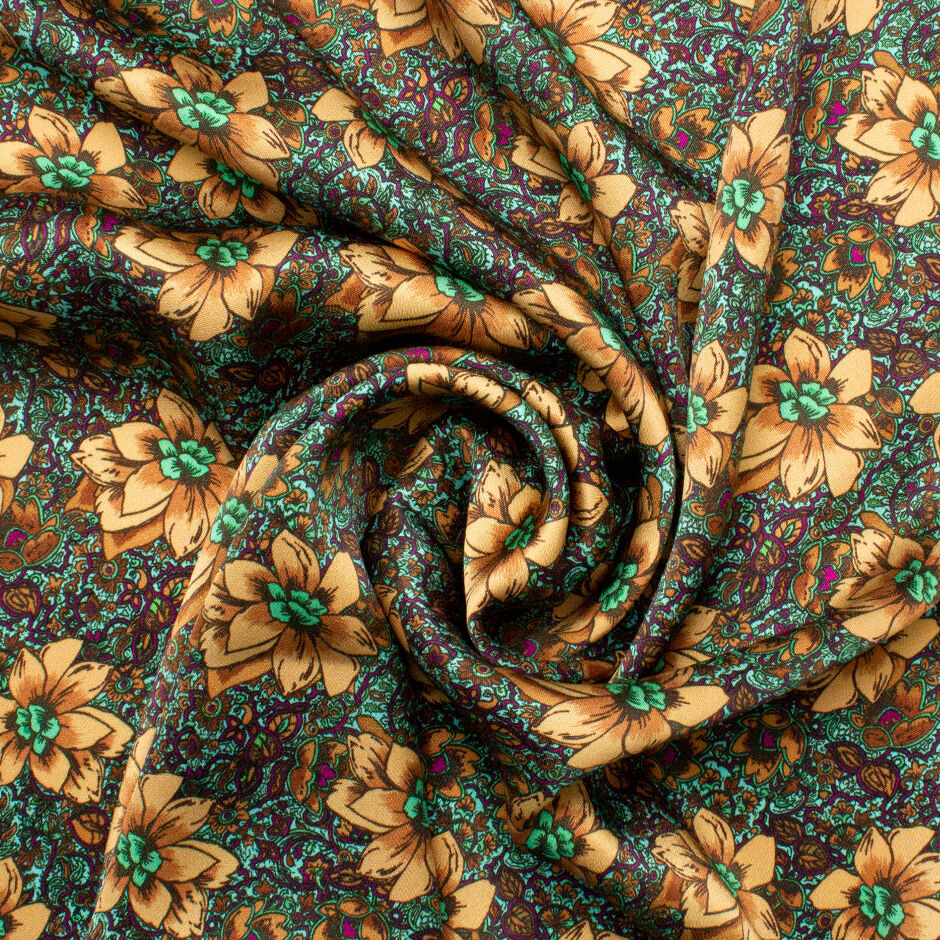

How to care for crêpe fabric?
You need to know how to care for your materials to make the most of them. Care instructions can impact what you want to do with the material, and influence people’s buying decisions. When it comes to caring for your crêpe fabric, like its uses and features, a lot depends on what specific fibres were used to create it.
For example, wool crêpe can be harder to look after, as it is a natural, organic fabric. Polyester crêpe, as a synthetic material, is more manageable and often requires less special care. Very often, crêpe fabrics require dry cleaning. If washed in the washing machine, the fabric can shrink. But certain crêpe fabrics could also be hand-washed, or machine washed in cold temperatures. For instance, you can wash a 100% viscose or polyester crêpe at 30 degrees.
When drying the material, your best bet is to allow it to dry naturally. You want to keep the fabric as flat as possible and let it dry before wearing it.
And for anyone who hates ironing, crêpe can be a gift from the heavens! The material has a natural wrinkly and textured look, so you don’t need to iron it. If there are deeper or accidental creases, it is possible to iron them as long as you keep the temperature down. It can be a good idea to place another fabric between the iron and the crêpe - especially if ironing a silk crêpe.
Is crêpe fabric comfortable to wear?
Comfort is a crucial feature people consider when choosing garments. The uniqueness of how crêpe fabric is made gives it a lot of versatility in this regard. The characteristics can vary depending on the fibre content. However, there are some features all crêpe fabric has going for it.
These are:
● The material is very breathable. As an organic fabric, crêpe is breathable and offers excellent ventilation even in higher temperatures. Crêpe is a popular choice for summer clothing.
● Crêpe fabric absorbs moisture well. Another superb quality is the fabric’s ability to absorb moisture, proving its usability in warmer climates.
● The fabric is adaptable. Crêpe is easily one of the most versatile fabrics out there. The material can be adapted for casual clothing or used in formal garments.
● Crêpe is three-dimensional. One of the defining traits of the fabric is its unique ability to create three-dimensional shapes.
Overall, crêpe fabric is a fabulous choice for fashion brands due to its versatility. The material is comfortable and well-suited for different designs, and the breathable and luxurious feel makes it pleasant on the skin.
Is it difficult to work with Crépe?
For designers, the ease of working with the chosen fabric is a big deal. You want to know what you’re getting into if you use a textile you've not worked with before. Regarding crêpe, the ease of sewing can depend on the fibres. Crêpe may not be the easiest, as the fabric can be a bit slippery. Synthetic crêpe can be more accessible, and fabrics like polyester crêpe are easier to work with than silk. However, you can get great results with any type of crêpe if you keep these tips in mind:
● Prewash your fabric as instructed
● Line up the fabric to prevent it from shifting during cutting
● Work with single layers when cutting the fabric
● Use fabric stabilisers when possible
● Consider using low thread tension when sewing to prevent puckering
Crêpe is a fantastic fabric for all sorts of clothing. It will require a bit of getting used to when working with the cloth for the first time. But the above tips can help you create wonderful end products!
Is Crépe fabric environment-friendly?
For many designers and consumers, eco-friendliness has become a central theme. You might want to select your fabrics with an emphasis on the ethics and sustainability of the material. For this, crêpe is a good choice because the traditional production of the fabric is considered sustainable.
However, much depends on the material. Natural fibres such as silk and wool are typically more environmentally friendly than synthetic materials. The materials come from renewable sources, and their production doesn’t have to impact the environment negatively. On the other hand, fabric variants using synthetic fibres could put more pressure on the environment due to production methods.
The most important thing is to look at where and how the crêpe fabric is produced, and to consider the production methods of creating the garment. Being mindful of these points can help limit the negative impact the fabric may have on the environment. Therefore, a lot of businesses adopt age-old processes to consciously leave a smaller print on our increasingly fragile environment.


How much does the crêpe fabric cost?
As you can probably guess by now, the versatile and varied nature of the crêpe fabric makes it hard to give a single price.
Much of the cost of crêpe depends on the fibres used in the final product. Natural fibres can be pricier than synthetic fabrics - as is true for most other fabric types. In addition, the dyes and other treatments might increase or decrease the price.
Of course, it’s also essential to consider the fabric’s durability considering the price. Natural crêpe could be more durable and last longer, reducing the lifetime cost of the material.
Here at Joel & Son Fabrics, crêpe fabric prices range from £39.90 to £229.90 per metre.
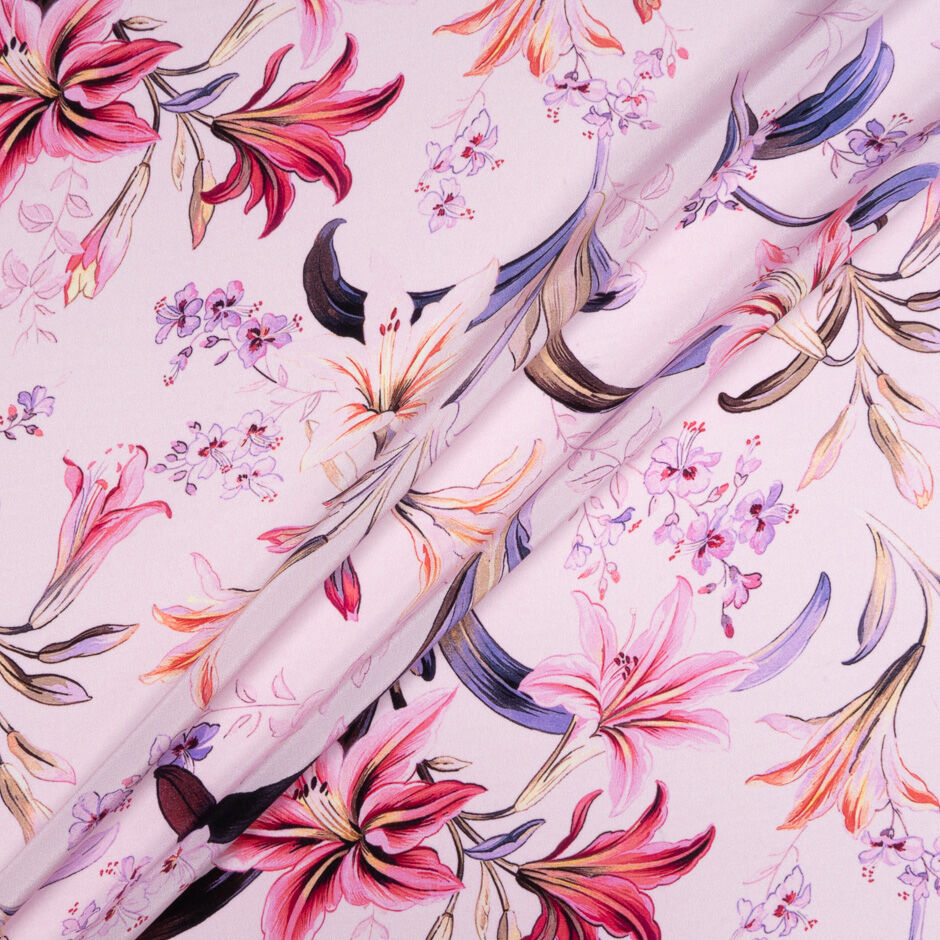
Are you interested in silk crêpe fabric?
Crêpe fabric is a fantastic textile for designers to use. It can look beautiful in many garments and fashion accessories, creating unique looks.
We have a beautiful collection of silk crêpe with different finishes and styles. Our collection also includes the luscious marocain crêpe for a thicker, lustred style finish. You can find exquisite floral or traditional patterns or opt for a single-colour design.
Our crêpe textiles come from established European factories that abide strictly by the EU regulations on emissions, dyeing, washing, finishing, and packaging. Our textiles are sustainable, and we’re always looking to guarantee our suppliers minimise the effects textile production can have on the environment.
If you have any questions regarding the order or the textiles, please get in touch with us, and we’re happy to help you with any enquiries.





























